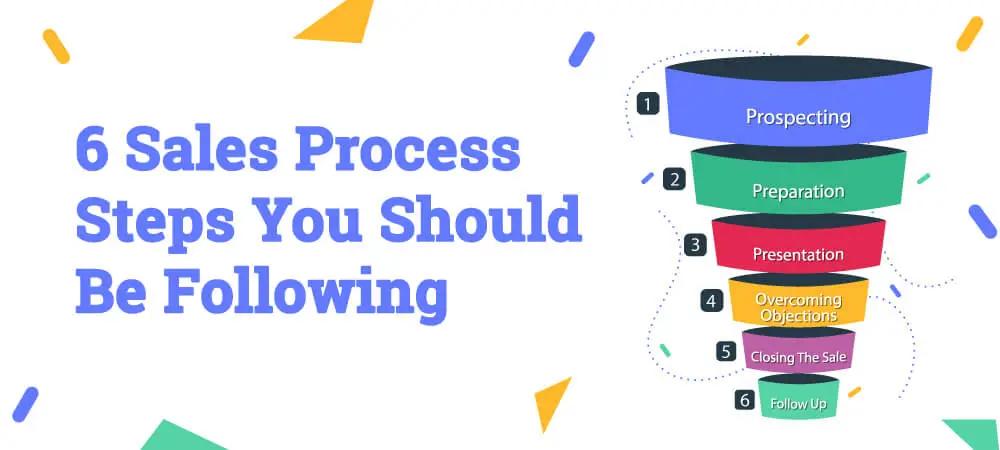Revving Up Your Sales Engine: The Ultimate Checklist for Building a Winning Sales Pipeline
Checklist for Building a Sales Pipeline
Feeling the pressure of dwindling leads and stagnant sales figures? It’s time to ditch the leaky pipeline and craft a robust system that attracts qualified prospects, nurtures them into loyal customers, and fuels your revenue engine. Introducing The Ultimate Checklist for Building a Winning Sales Pipeline!
This isn’t just another theoretical framework; after all it’s a battle-tested roadmap packed with actionable steps, practical tools, and expert insights. Whether you’re a seasoned sales pro or just starting out, this checklist will guide you through every crucial stage of pipeline construction. With this in mind let us have a look at the list.
1. Define Your Focus:
- Target Market: Clearly identify the specific group of customers you want to reach, considering factors like industry, size, location, and buying patterns. (e.g., Export-oriented pharma companies with annual revenue exceeding $50 million operating in North America and Europe.)
- Product/Solution Fit: Choose the specific product or service offering that best addresses the needs and challenges of your chosen target market. (e.g., Streamlined export logistics solutions for pharma companies aiming to expand into new markets.)
2. Niche Down for Impact:
- Identify the Decision-Makers: Within your target market, pinpoint the specific individuals who hold the authority to make purchasing decisions. (e.g., Supply Chain Directors and VP of International Operations)
- Segment by Pain Points: Further refine your niche by understanding the unique challenges and pain points faced by different segments within your target market. (e.g., Identify pharma companies struggling with regulatory compliance in new markets vs. those facing high logistics costs.)
3. Craft Your Ideal Prospect Avatar:
- Go Beyond Demographics: Understand their professional background, career goals, values, and motivations. (e.g., Value data-driven decision-making, prioritize efficiency and cost-savings, and are under pressure to meet aggressive expansion targets.)
- Emphasize Emotional Drivers: Identify their fears, frustrations, and aspirations related to their work and the challenges they face. (e.g., Fear of regulatory delays, frustration with manual logistics processes, and aspire to achieve market leadership in new regions.)
4. Hunt in the Right Places:
- Leverage LinkedIn: Utilize advanced search filters and join relevant groups to connect with your ideal prospects after all due to linkedin being B2B portal.
- Network with Existing Contacts: Leverage your existing network to gain introductions and referrals to decision-makers within your target niche.
- Explore Industry Events and Forums: Attend industry conferences and participate in online forums to build relationships and generate leads.
5. Optimize Your LinkedIn Magnet:
- Headline Compelling: Craft a headline that clearly communicates your value proposition and grabs attention. (e.g., “Export Logistics Guru | Helping Pharma Companies Conquer Global Markets”)
- Image Professional: Use a high-quality professional headshot that conveys trust and competence.
- About Section Captivating: Tell a compelling story about your expertise and the impact you deliver for clients.
- CTA Clear and Actionable: Encourage prospects to connect or schedule a call to discuss their specific needs.
6. Authority Booster:
- Highlight Unique Strengths: Identify your key differentiators – what sets you apart from competitors? (e.g., Proprietary technology platform, global network of partners, proven track record of success in your target market)
- Showcase Expertise: In short, Share valuable thought leadership content like articles, webinars, or case studies demonstrating your knowledge and understanding of your prospects’ challenges.
- Leverage Social Proof: Gather testimonials and positive client reviews to build trust and credibility with potential customers.
7. Content Arsenal:
- Develop Targeted Content: Create diverse content formats (e.g., blog posts, infographics, white papers) addressing specific pain points and offering actionable solutions.
- Focus on Value, Not Sales: All in all, Prioritize providing valuable insights and educational content rather than overtly promoting your product or service.
- Offer Free Resources: Share valuable tools, checklists, or templates to attract prospects and nurture leads.
8. Storytelling Power:
- Craft Compelling Narratives: Use case studies and success stories to showcase how you’ve helped similar clients achieve their goals.
- Quantify the Impact: Highlight measurable results and outcomes achieved through your solutions to demonstrate tangible value.
- Evoke Emotion: Make your stories relatable and connect with your prospects on an emotional level.
9. Database Blueprint:
- Start with LinkedIn: Utilize LinkedIn Sales Navigator or similar tools to build targeted prospect lists based on your ideal client profile.
- Expand Your Reach: Import existing contacts, leverage email marketing platforms, and explore data enrichment services to broaden your database.
- Maintain Data Quality: Regularly update your database with accurate information and segment your prospects for effective outreach.
10. Value Outreach:
- Personalize Your Messages: Avoid generic templates and tailor your communication to address each prospect’s specific needs and challenges.
- Offer Solutions, Not Pitches: Focus on providing valuable insights and offering helpful resources rather than immediately pushing for a sale.
- Nurture Across Channels: Utilize a multi-channel approach, combining email and LinkedIn outreach with targeted social media engagement.
11. Automation Level:
- Assess Your Resources: Consider your time constraints, budget, and team size to determine the optimal level of automation.
- Start with LinkedIn Automation: Utilize tools like LinkedIn Sales Navigator’s InMail functionality and automated sequence messaging for initial outreach.
- Integrate Email Automation: For more advanced nurturing campaigns, consider email marketing platforms like HubSpot or Mailchimp to personalize and schedule email sequences.
- Remember the Human Touch: While automation saves time, prioritize personalized follow-up calls and meetings for qualified leads.
12. Automated Campaigns:
- Segment for Relevance: Tailor your automated campaigns to address the specific needs and interests of different audience segments within your target market.
- Content Variety is Key: Utilize a mix of content formats (e.g., videos, blog posts, case studies) within your automated sequences to keep prospects engaged.
- Track and Optimize: Monitor the performance of your automated campaigns and make adjustments based on data and engagement metrics.
13. Appointment Focus:
- Follow-up is Crucial: Implement a structured follow-up process to reach out to prospects after sharing valuable resources and nurturing content.
- Personalize Your Approach: Tailor your follow-up messages to address the specific content the prospect engaged with and offer further assistance.
- Focus on Value First: Always prioritize offering additional value and insights before transitioning to scheduling a sales call.
14. Track & Measure:
- Define Key Metrics: Identify critical metrics like response rates, conversion rates, and appointment setting success to track progress and measure campaign effectiveness.
- Utilize Analytics Tools: Leverage built-in analytics features in LinkedIn Sales Navigator and email marketing platforms to gain insights into campaign performance.
- Regularly Analyze and Adapt: Analyze your data regularly and make adjustments to your approach based on what’s working and what’s not.
15. Phone Savvy:
- Practice Active Listening: Develop strong listening skills to understand your prospect’s needs and concerns during phone conversations.
- Handle Objections Confidently: Anticipate common objections and prepare clear, concise, and value-driven responses.
- Build Rapport Quickly: Use conversational techniques and ask open-ended questions to create a positive and engaging connection with prospects.
16. Value Proposition Crystal Clear:
- Focus on Client Benefits: Clearly articulate the specific benefits and outcomes your solution delivers, not just features or technical specifications.
- Quantify ROI whenever possible: Showcase the measurable impact your solution can have on the client’s business, like increased revenue, reduced costs, or improved efficiency.
- Differentiate from the Competition: Emphasize what makes your offering unique and how it solves their problems better than any alternative.
17. Prospecting Habit & Discipline:
- Schedule Time for Prospecting: Block out dedicated time in your calendar for prospecting activities to ensure consistent effort.
- Prioritize High-Impact Activities: Focus on tasks like personalized outreach and follow-up calls that offer the highest return on investment for your time.
- Track Progress and Celebrate Wins: Monitor your prospecting activity and celebrate milestones to stay motivated and maintain the prospecting habit.
Checklist for Building a Winning Sales Pipeline
All in all, these are just to help you to clarify how sales checklist can help you without breaking too much sweat or stress, with this purpose in mind, I Hope you have learned and taken value from the article
If you want us to help you in Sales, Strategy, Consulting, or Enablement please connect with us on Pulse Business.
Also Check Rajdeep Chauhan the writer of this article






